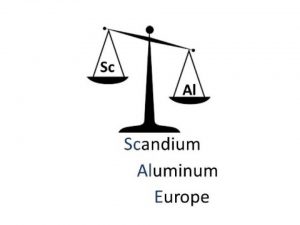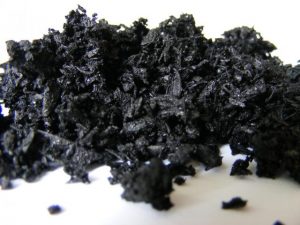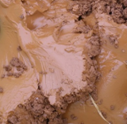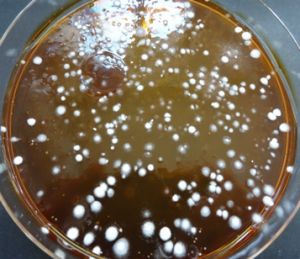
Ongoing projects
 Project title: Development and application of an innovative technology for removal of organic micropollutants
Project title: Development and application of an innovative technology for removal of organic micropollutants
Funding Programme: Hungarian-French Bilateral Scientific and Technological Collaboration, TÉT_FR_16
Funding Agency: National Research, Development and Innovation Office
Project Identification Number: TÉT_16-1-2016-0107
Project duration: 2017.01.01 – 2018.12.31
Project type: bilateral cooperation
Project partner: École Nationale Supérieure de Chimie de Rennes, L’Equipe Chimie et Ingénierie des Procédés, https://www.ensc-rennes.fr/recherche/equipe-cip/
Summary: The project aims at developing efficient biodegradation methods for removal of micropollutants from water. The target emerging micropollutants are primarily traces of pharmaceuticals which even though occur only at low concentrations (μg/l or ng/l) they may have specific adverse effects at cell and molecular level. The target is development of a bioaugmentation technology with the utilisation of exogene microbial phyla or communities.
::::::::::::::::::::::::::::::::::::::

Project title: „SCALE” Production of Scandium compounds and Scandium Aluminum alloys from European metallurgical by- products
Funding Programme: EU Research and Innovation programme H2020-EU.3.5.3
Funding Agency: European Commission
Project Identification Number: ID: 730105
Project duration: 2016. 12. 01 – 2020. 11. 30.
Project type: consortial
Project Partners: The Consortium: http://cordis.europa.eu/project/rcn/206331_en.html
Summary:
Scandium (Sc) is one of the highest valued elements in the periodic table and an element which is usually grouped in REEs as it shares many characteristics with Yttrium. The SCALE project sets about to develop and secure a European Sc supply chain through the development of technological innovations, which will allow the extraction of Sc from European industrial residues. This will be achieved through the development of a number of innovative extraction, separation, refining and alloying technologies that will be validated in an appropriate laboratory and bench scale environment to prove their technical and economic feasibility.
::::::::::::::::::::::::::::::

Project title: The effects of biochar surface chemistry and physical properties on soil biota in different biochar-soil systems
Funding Programme: OTKA
Funding Agency: National Research, Development and Innovation Office
Project Identification Number: NKFI120464
Project duration: 2016. 11. 01 – 2019. 10. 31.
Project type: Basic research (non-consortial)
Project partners: Department of Applied Biotechnology and Food Science (Budapest University of Technology and Economics)
Summary:
The continuously growing interest in field-scale biochar soil application, either for improving degraded soil characteristics and increasing productivity, or for replacing inorganic fertilizers highlights the poorly defined fundamental mechanism by which biochar affects the soil functions and draws the attention to an effective evaluation of the interactions between biochar and soil biota. There are very few comprehensive studies which provide quantitative data and detailed qualitative descriptions of fundamentals concerning biochar effect on soil biota or on changes in soil physico-chemical properties.
The main objectives of our research are to find and describe clear evidence on the relationship and interactions between biochar physical properties as well as surface chemistry and biochar-mediated changes in soil biology. Fundamental mechanisms are planned to be explored by which biochar affects functions of soil such as nutrient cycling, water flow and storage, soil structural dynamics, biodiversity and role as a habitat for microflora, animals and plant roots.
We aim to characterize the long-term effects and time-sequenced reactions on soil biota in different soil-biochar systems and to identify the prioritized soil-specific characteristics of biochar products aiming at the use of biochar as soil amendment. Particular properties of biochar for use in specific agricultural context will be selected; rationalized test battery for evaluation of sustainable application of biochar to soil will be established.
::::::::::::::::::::::::::::::

Project title: The effect of red mud on soil biota
Funding Programme: OTKA PD_16
Funding Agency: National Research, Development and Innovation Office
Project Identification Number: PD 121172
Project duration: 2016.10.01. – 2019.09.30.
Project type: Postdoc project (non-consortial)
Project partner: BME, Applied Biotechnology and Food Science Department (Research location)
Summary: Red mud is the residue of aluminium production from bauxite. Red mud may have several reuse options, one of which its agronomical application, for example for improvement of sandy soils. So far there are still scarce information abut the effect of red mud on soil biological activity. The main aim of the project is to gain an understanding on how red mud affects the activity and living conditions of soil biota and to determine the connections amongst the short- and long-term physical, chemical and biological changes in the red mud treated soils.
::::::::::::::::::::::::::::::

Project title: The effect of red mud on the microbial activity of sandy soils
Funding Programme: OTKA PD_16
Funding Agency: National Research, Development and Innovation Office
Project Identification Number: PD 115871
Project duration: 2016.01.01. – 2017.12.31
Project type: Postdoc project (non-consortial)
Project partner: BME, Applied Biotechnology and Food Science Department (Research location)
Summary: Red mud, an industrial residue may be reused as soil ameliorant in sandy soils. Most of the studies conducted so far have focused primarily on its effects on the soil physico-chemical properties and not on the changes in the soil microbial activity. The main target of the project is to clarify the effect of red mud on the activity of soil microflora in the treated sandy soils and to identify the short- and mid-term changes in the soil microbial activity and community structure. Further aim is the study of the microflora of the red mud.


